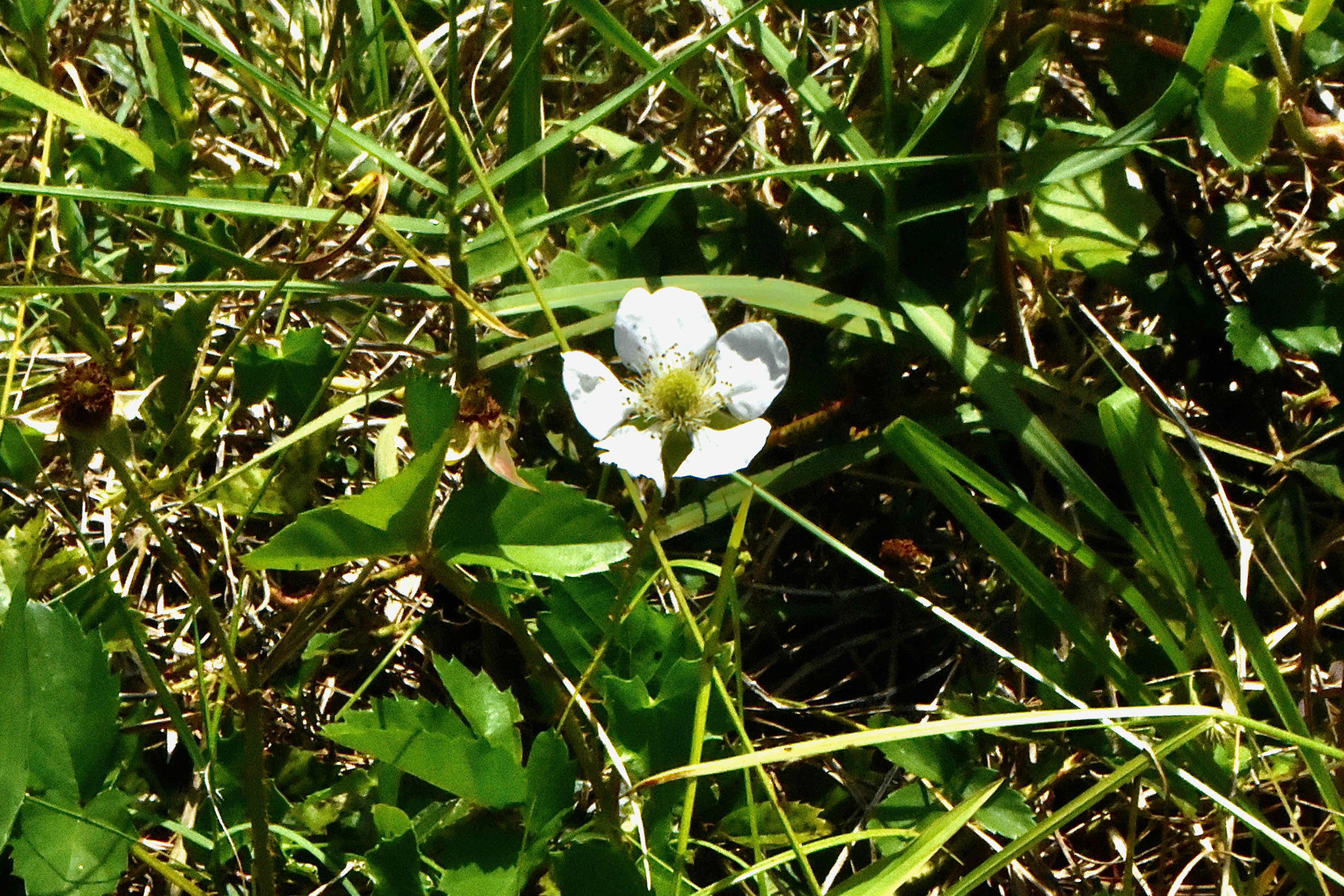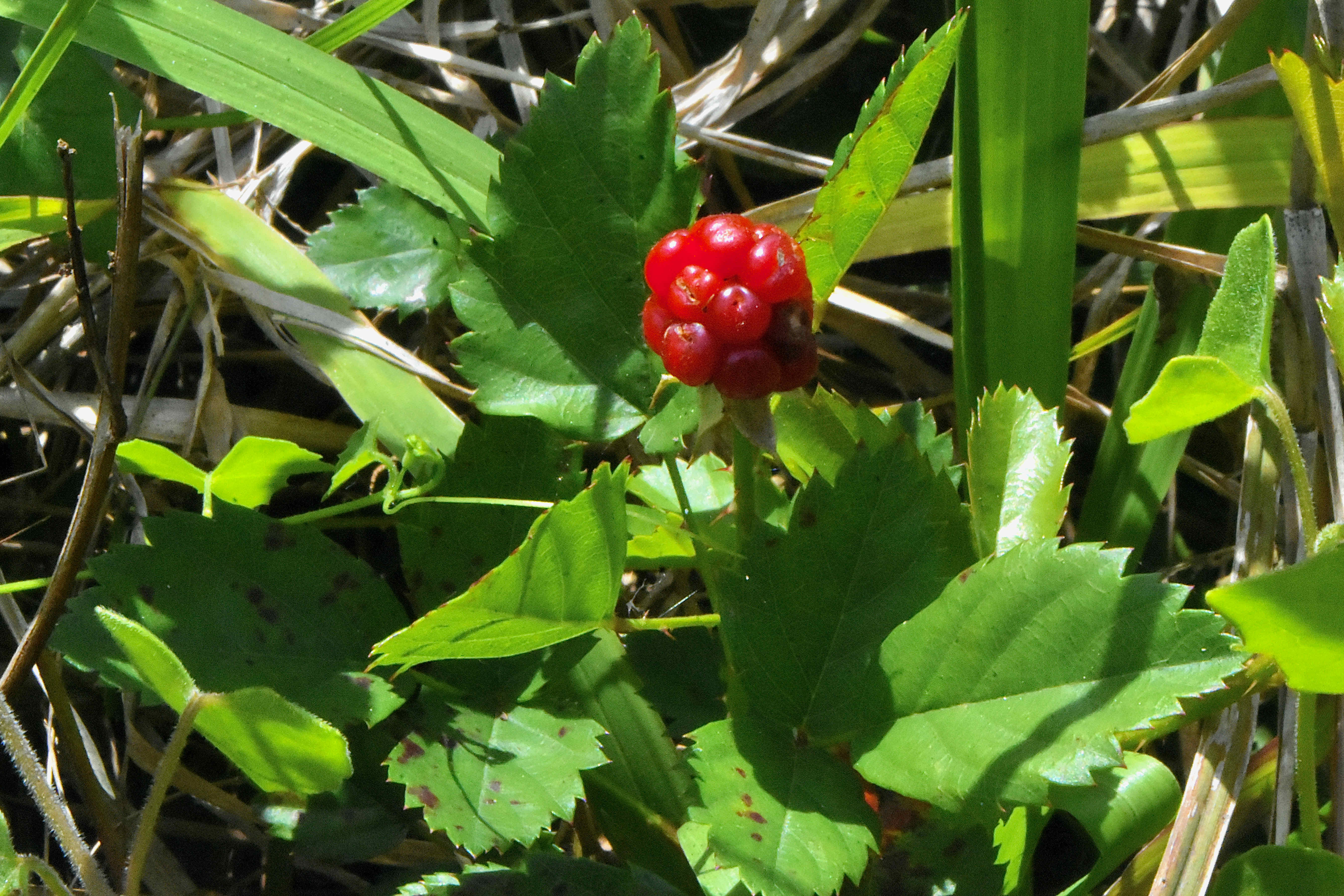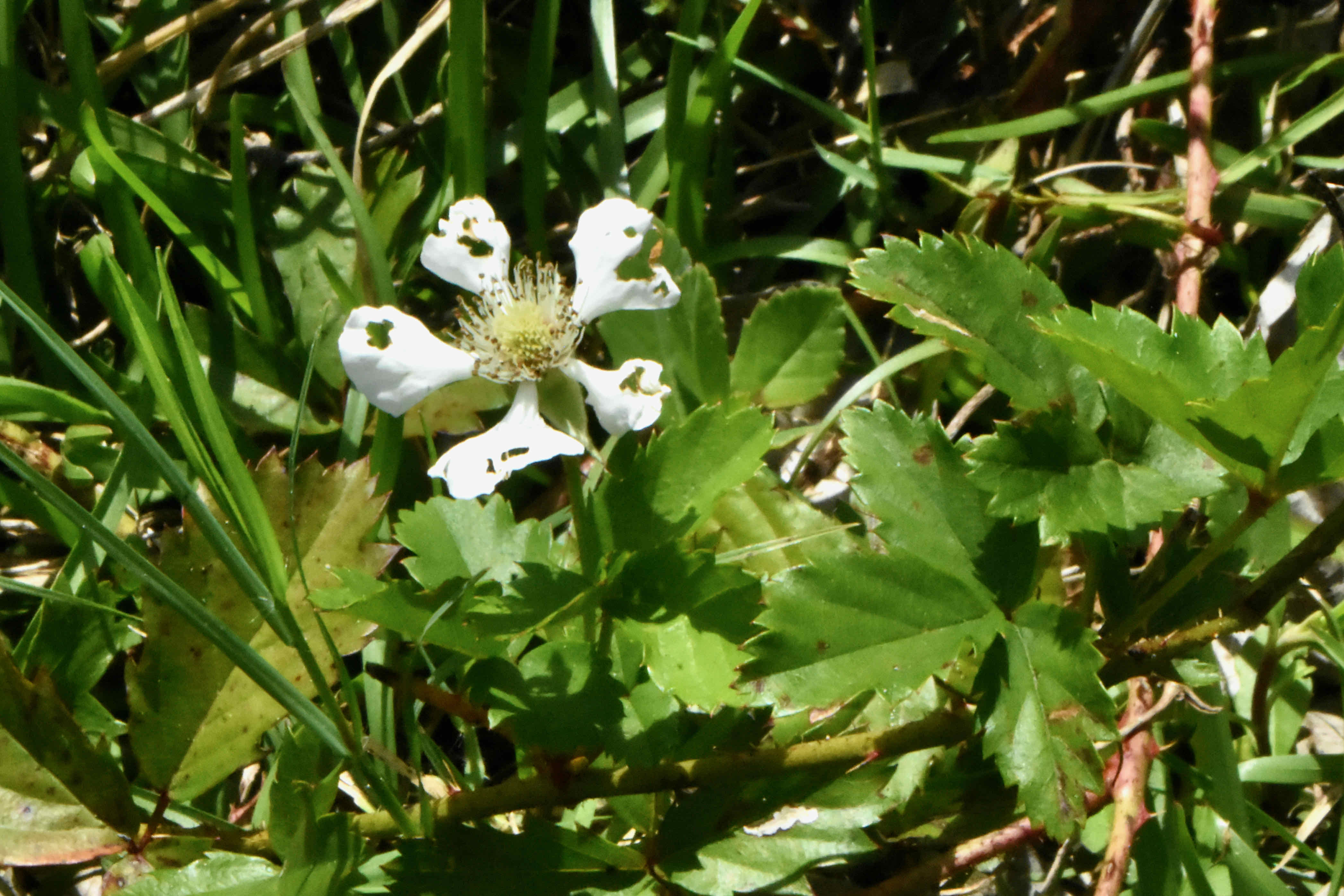
Sand blackberry, photographed at Grassy Waters Preserve, Hog Hammock Trail, West Palm Beach, Palm Beach County, in April 2022.
Growing up in Western Pennsylvania, late spring and early summer was blackberry picking time. We’d head to the fields around us, filling bags with the delicious fruit that our mother would turn into pies and cobblers.
Sand blackberry, Rubus cuneifolius, isn’t the blackberry we picked as kids, but it’s close enough to stir some fond memories when we happen upon it.
It is a Florida native found in eastern states from Louisiana up the Atlantic coast to New York and New Hampshire. (Pennsylvania is part of its range, but not the western half of the commonwealth.)
In Florida, it’s range includes Broward and Palm Beach counties, where the Institute for Regional Conservation considers it “imperiled,” but it’s much more common through the central Peninsula and into the Panhandle.
Sand blackberry is one of four blackberry species native to Florida, two of which are found in South Florida. Southern blackberry, aka southern dewberry, is the other.
Like the wild blackberry varieties back home, sand blackberry is armed with prickly canes to defend itself against foraging animals and marauding kids. Unlike the the varieties back home, the canes are short, perhaps a foot, foot-and-a-half tall and erect, rarely arching.
The leaves are compound, the three leaflets coarse, oblong in shape, with prominent veining and serrations along the edges. First-year canes only produce leaves; second-year canes produce flowers and fruit and then die.
The flowers are fairly large, with five with petals and a greenish-yellow center. Sand blackberry blooms in late winter to early spring in South Florida, producing dark purple fruit in spring to early summer. The flowers are also apomictic, meaning they don’t need to be fertilized in order to produce fruit and viable seeds. The fruit can be eaten raw or cooked.
Sand blackberry produces suckers and can form clumps and even dense thickets, which provide shelter for small animals. As might be expected, birds and mammals eat the berries.
It grows in well-drained sandy or rocky soils, in full sun but tolerates some shade. It is not not salt tolerant.
Sand blackberry is occasionally cultivated; attempts to grow it in both South Africa and Australia have gone a bit sideways. It’s gotten a foothold in the wild thanks to hungry birds, and have become something of a weedy pest.
The Seminoles used the roots of sand blackberry to make a tonic. They used the fruit to make a dye.
Sand blackberry is a member of Rosaceae, the rose family.



